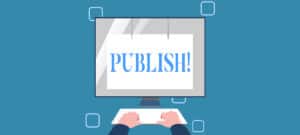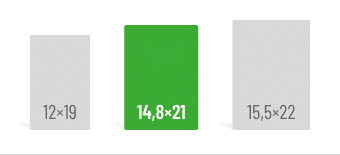What is a pseudonym?
A pseudonym (also known as pen name or nom de plume) is a fictitious author’s name under which you publish. Classic examples show how diverse the motivations can be – for example, to protect one’s own identity, to play with different writing styles and genres or to address certain target groups. Well-known examples are J.K. Rowling as Robert Galbraith, Stephen King as Richard Bachman or Lewis Carroll as Charles Dodgson’s alter ego.
What pseudonyms are there?
Open pseudonym
With an open pseudonym, it is generally known who is behind the name. Authors use it to build a brand without completely hiding their connection to themselves.
- Advantages:
- Flexible marketing: Photo shoots, readings or social media appearances are possible without any problems.
- Possibility to link the pseudonym to the work or your person in terms of content – for example, by basing it on your professional past or adapting it to the genre.
- Example: Author Christian Schleifer writes under the pseudonym René Laffitte. Through the open approach, he can use both identities for different contexts.
Closed pseudonym
With the closed pseudonym, the true identity remains secret. Very few people know who is really writing.
- Advantages:
- Protection of privacy and distancing from work or family.
- Particularly suitable for sensitive or controversial content.
- Disadvantages:
- Public appearances (readings, podcasts, TV) are hardly or not at all possible.
- Social media channels and websites have to be completely rebuilt.
- Constant caution that no one reveals the identity.
- Often more difficult for publishing authors to implement, but more flexible in self-publishing.
- Personal contacts are very important in the book world and therefore considerably more difficult.
Why a pseudonym? Motives & Opportunities
There are many reasons to get a pseudonym:
- Privacy & Protection
Hide your identity to protect yourself, your job, family or friends – especially when it comes to provocative or personal topics. - Brand & Genre Clarity
Use different author identities for different genres, for example to clearly manage expectations and avoid confusion. - New beginning, genre change or new language style
Did your first novel flop or should a genre break follow? A pseudonym can enable a new start. Anyone who has previously written romance novels and now publishes thrillers can create clear expectations with a new name. In addition, you can consciously distinguish yourself from older publications. Different writing styles can also be separated and marketed in a targeted manner. - Disguise gender, origin or anonymity
Depending on the target group, a gender-neutral or different-sounding name can bring advantages. Especially in international self-publishing, authors rely on gender-neutral names to circumvent prejudices or appeal to broader target groups. - Literary Fun & Persona
Sometimes a pseudonym is simply a creative role – such as “Wolf Pascoe”, under which a deliberately different content or style is presented. - Economic decision
Sometimes the choice is simply a question of marketing – does the name sound distinctive, international or typical of the genre?
Risks & Challenges
- Marketing Complexity
More marketing effort: Each identity requires its own social media channels, websites and branding – this means more time and effort. - Limited visibility and contacts
Readers expect a connection to the person behind the book – marketing suffers when you appear as an unknown, which could make you lose reach. Contacts are crucial in the book business – and more difficult to establish under a closed pseudonym. - Difficult public appearance
Readings, interviews or podcasts become tricky because the risk of exposure increases and personal contacts become more difficult. - Legal aspect
A pseudonym does not protect against copyright or liability issues. In the event of legal disputes, the real person always applies. - Blurring voices & double work
Two author identities need a clear separation, both stylistically and organizationally. Each identity requires its own social media channels, websites, and branding – which takes extra time and energy.
Practical examples & voices
The topic is controversially discussed in the self-publishing community:
- An author on Reddit:
“I’m using a pen name for dark crime mysteries. I don’t want colleagues to stumble across my books.”
– This shows how a pseudonym can protect professional identity in sensitive topics. - Another contribution:
“Pros: Avoid internet stalkers. Cons: Miss opportunities for people who know you to find your book.”
– The tension between security and visibility is shown.
Conclusion
The decision for or against a pseudonym is not a question of right or wrong, but a strategic and, above all, personal consideration. The decision always moves between the poles of privacy and visibility. Your goals are decisive:
- Do you want to protect your privacy?
- Do you want your name to be part of your brand?
- Or are you looking for a fresh start?
- Does a genre change feel right for your readers – or does it seem irritating?
- What does your overall feeling say?
In self-publishing, you have the freedom to go both ways – the only important thing is that you make your decision consciously and know the consequences. If you need help with the decision, we have a checklist for you here: Checklist – Pseudonym: Yes or no?
Sources:
- Why do Authors Use Pseudonyms and Pen Names? | BookBaby
- What Are the Pros (and Cons) of Using a Pen Name? – ED A. MURRAY
- Writing Under a Pen Name – Pros and Cons – Jericho Writers
- The Pros and Cons of Using a Pen Name – KN Literary Arts
- Using a Pen Name | Troubador Publishing
- Interview with Christian Schleifer alias René Laffite during the Bookerfly Authors’ Camp 2025
- What are the pros and cons of publishing under a pseudonym vs publishing under your real name? | Reddit (Voice 1)
- Pros and Cons of Using a Pen Name | by WRITERS AFTER DARK | Medium (Voice 2)
Do you like our magazine? Then sign up for our GRIN newsletter now!










